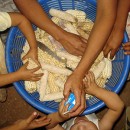Languages
Thursday, April 18, 2024
News and Views from the Global South
Asian Population and Development Association (APDA)
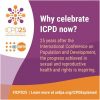
Asian & Arab Parliamentarians to Move Forward on Reproductive Health & Gender Empowerment
Over the years, the UN Population Fund (UNFPA) has worked in tandem with legislators and parliamentarians to help implement the historic Programme of Action (PoA) adopted unanimously by over 20,000 UN delegates at a landmark International Conference on Population and Development (ICPD) in Cairo back in 1994.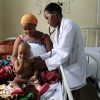
To Uplift a Woman is to Uplift a Village
Khadija Zuberi, 23, from Ruaha Mbuyuni village in Tanzania’s central highlands, is a single mother to her four-year-old son, Hashim.
Partnering for Youth in Central Asia
Young people around the world are facing increasingly insurmountable, persistent barriers as they try to achieve their full potential and secure a prosperous future. However, Central Asia and the Asia-Pacific have already begun working to ensure that no one is left behind.
Parliamentarians Promote Youth Investment in Kazakhstan
Parliamentarians from 36 countries met this weekend in Astana, Kazakhstan, to discuss the future of youth in Central Asia and the Asia-Pacific region. The gathering called “International Conference on Investing on Youth: Leaving No One Behind” took place on the Oct. 19 to 20, and the goal was to advance the Sustainable Development Goals (SDGs), set by the United Nations, with regards to youth.
Investing in Arab and Asian Youth For a Sustainable Future
As the youth population has increased to unprecedented levels in Arab and Asian regions, governments need to do more to invest in them.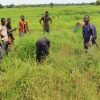
How Ghana’s Rapid Population Growth Could Become an Emergency and Outpace Both Food Production and Economic Growth
Paul Ayormah and his fellow farmers make their way home after hours spent manually weeding a friend’s one-acre maize farm in Ghana’s Eastern Region. “Tomorrow it will be the turn of my maize farm,” he tells IPS.
Declining Birth Rates Not Exclusive to Wealthy Nations
Countries do not have to be economically prosperous to move from a situation of high birth and death rates to low fertility and mortality rates. Education, social security, environments conducive to economic development and good value systems are what promote this, as evidenced by the recorded experiences of Asian countries as far apart as Japan and India.
Project Population: Addressing Asia’s Ageing Societies
While populations have seen and undergone changes since the beginning of time, one trend in particular is unfolding across the world: less children, older people. In an effort to tackle the complex issue in Asia, government officials are convening to help create a sustainable society where no one is left behind.
To Have Children or Not: The Importance of Finding a Balance
While the world’s population has changed dramatically over the last 50 years, little is still understood about fertility transition and the reasons behind it. Over the last half a century, the global fertility rate has halved, reaching a level of 2.5 births per woman.
Solving Japan’s Fertility Crisis
While much of the global discussion for decades has been focused on overpopulation and its consequences, less can be said of the risks of low fertility and an ageing population—risks that are currently threatening the future of Japan.
Developing World Faces Challenge of Large Ageing Population
Experts on population ageing converged in Seoul this week to discuss how to make reaching one's "golden years" a happy and sustainable process across the world.
Parliamentarians a “Fourth Pillar” of Sustainable Development
Investing in youth and the population dividend, women's health, sustainable development objectives, and the key role of parliamentarians to promote transparency, accountability and good governance to achieve the 2030 Agenda on Sustainable Development topped the agenda of a two-day conference of Asian and African lawmakers in New Delhi last week.
Parliamentarians Study Nexus of Youth, Refugees and Development
Held for the first time in the Arab world, an annual meeting of Asian and Arab Parliamentarians examined how regional conflicts hinder the development of effective policies to achieve sustainable development, particularly as they generate large numbers of refugees, internally displaced persons and migrants.
The Arab Youth Bulge and the Parliamentarians
More than ever before, the Arab region now registers an unprecedented youth population growth while facing huge challenges such as extremely high unemployment rates --more than half of all regional jobless population--, and inadequate education and health provision, in particular among young women.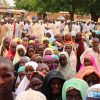
Climate Change-Poverty-Migration: The New, Inhuman ‘Bermuda Triangle’
World organisations, experts and scientists have been repeating it to satiety: climate change poses a major risk to the poorest rural populations in developing countries, dangerously threatening their lives and livelihoods and thus forcing them to migrate.
What Future for 700 Million Arab and Asian Youth?
With a combined population of around 400 million inhabitants, 22 Arab countries are home to nearly 300 million youth. Meantime, there are 400 million youth living in Asia and the Pacific. In both regions, these 700 million young people aged 15–24 years account for up to 60 per cent of world’s youth population. What future for them?.« Previous Page






